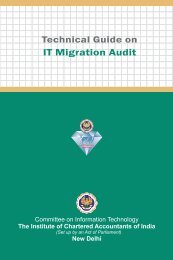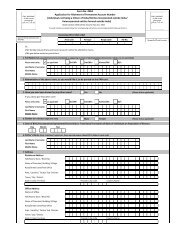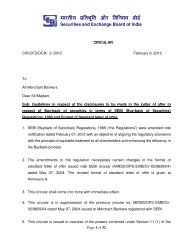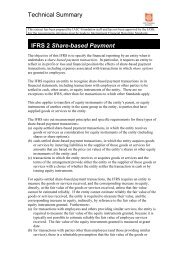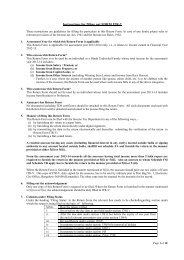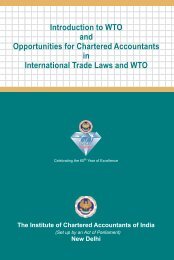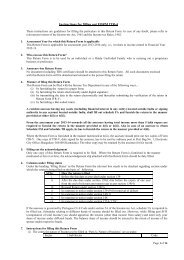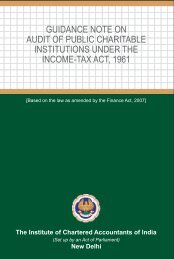- Page 1 and 2: Technical
- Page 3 and 4: © The Institute of Chartered Accou
- Page 6 and 7: PREFACE In this financially globali
- Page 8 and 9: CONTENTS Foreword..................
- Page 10 and 11: GLOSSARY Arbitrage The purchase or
- Page 12 and 13: Glossary Currency Position Currency
- Page 14 and 15: Glossary Inflation Initial Margin I
- Page 16 and 17: Glossary Position Premium Primary D
- Page 18 and 19: INTRODUCTION 1. Preface to the Stan
- Page 20 and 21: CHAPTER 1 TREASURY- AN INTRODUCTION
- Page 22 and 23: Treasury- An Introduction categorie
- Page 24 and 25: CHAPTER 2 TREASURY PRODUCTS AND SER
- Page 28 and 29: Range of Products Treasury Products
- Page 30: Treasury Products and Services deri
- Page 33 and 34: Technical
- Page 36 and 37: CHAPTER 4 ORGANISATIONAL STRUCTURE
- Page 38 and 39: (b) (c) Back-Office Liquidity risk
- Page 40 and 41: Organisational Structure of a Bank
- Page 42 and 43: CHAPTER 5 INVESTMENT PORTFOLIO 5.1
- Page 44 and 45: Investment Portfolio (iv) All the t
- Page 46 and 47: Investment Portfolio (f) The Accoun
- Page 48 and 49: Investment Portfolio b) Investment
- Page 50 and 51: (c) Investment Portfolio Account. I
- Page 52 and 53: Investment Portfolio investment por
- Page 54: (c) (d) (e) (f) Investment Portfoli
- Page 57 and 58: Technical
- Page 59 and 60: Technical
- Page 61 and 62: Technical
- Page 63 and 64: Technical
- Page 65 and 66: Technical
- Page 67 and 68: Technical
- Page 70 and 71: CHAPTER 8 TREASURY UNIT - FUNDAMENT
- Page 72 and 73: Treasury Unit - Fundamental Control
- Page 74 and 75: (e) (f) Treasury Unit - Fundamental
- Page 76 and 77:
Document Security Treasury Unit - F
- Page 78 and 79:
CHAPTER 9 INTERNAL AUDIT OF TREASUR
- Page 80 and 81:
Internal Audit of Treasury Operatio
- Page 82 and 83:
(i) • Risk tolerance • Back-up
- Page 84 and 85:
(n) (o) (p) (q) Internal Audit of T
- Page 86 and 87:
Risk Perspectives Internal Audit of
- Page 88 and 89:
Internal Audit of Treasury Operatio
- Page 90:
(i) (ii) (iii) (h) (i) (j) (k) (l)
- Page 94 and 95:
ANNEXURE - A SPECIMEN CHECKLIST FOR
- Page 96 and 97:
Annexure - A d VI. a b Check sector
- Page 98 and 99:
Annexure - A X a XI a b Documentati
- Page 100 and 101:
ANNEXURE - B SPECIMEN CHECKLIST FOR
- Page 102 and 103:
Annexure - B u Whether any unusual
- Page 104 and 105:
Annexure - B same are brought to th
- Page 106 and 107:
Annexure - B VI a b c d Nostro Reco
- Page 108 and 109:
Annexure - B mirror accounts or whe
- Page 110 and 111:
Annexure - B b c d e f g h Whether
- Page 112 and 113:
Annexure - C c d e f g h Whether th
- Page 114 and 115:
Annexure - C e f g h i j k m n o p
- Page 116 and 117:
Annexure - C e Whether any forward
- Page 118 and 119:
Annexure - C X d e f g h i j k l A
- Page 120 and 121:
Annexure - C i j k l m n o p q r Wh
- Page 122 and 123:
Annexure - C b c d e f g h i D a b
- Page 124 and 125:
Annexure - C a F Certificate of Dep
- Page 126 and 127:
Annexure - C a b c d a b c XII iii.
- Page 128 and 129:
ANNEXURE - D GUIDANCE NOTE ON MARKE
- Page 130 and 131:
Annexure - D Sensitivity and Value
- Page 132 and 133:
Annexure - D 1.2.5 Risk Reporting:
- Page 134 and 135:
Annexure - D iii) management and re
- Page 136 and 137:
Annexure - D TYPICAL ORGANISATIONAL
- Page 138 and 139:
activity. Annexure - D • Dealing
- Page 140 and 141:
Annexure - D usage of risk against
- Page 142 and 143:
Annexure - D inflows of funds, i.e.
- Page 144 and 145:
Annexure - D environment are duly a
- Page 146 and 147:
Annexure - D separate analysis of i
- Page 148 and 149:
Annexure - D 4.4 Generally, the app
- Page 150 and 151:
Annexure - D • There is still som
- Page 152 and 153:
Annexure - D Chapter 5- Foreign Exc
- Page 154 and 155:
135 Annexure - D convertible, this
- Page 156 and 157:
Annexure - D another, where the hol
- Page 158 and 159:
Annexure - D Chapter 6- Treatment o
- Page 160 and 161:
Annexure - D to some extent on the
- Page 162 and 163:
Annexure - D Managing Market Access
- Page 164 and 165:
Annexure - D Principle 5: It is imp
- Page 166 and 167:
Annexure - D Sources, effects and m
- Page 168 and 169:
149 Annexure - D Earnings perspecti
- Page 170 and 171:
151 Annexure - D Gap analysis: Simp
- Page 172 and 173:
Annexure - D absolute value). Highe
- Page 174 and 175:
Annexure - D Value at Risk (VaR) An
- Page 176 and 177:
Annexure - D as to be close to real
- Page 178 and 179:
Annexure - D Stress Testing Techniq
- Page 180 and 181:
Annexure - D A well-understood limi
- Page 182 and 183:
Annexure - E more sophisticated sys
- Page 184 and 185:
Annexure - E Asset - Liability Mana
- Page 186 and 187:
Annexure - E for all banks feasible
- Page 188 and 189:
Annexure - E meetings. 5.3 Composit
- Page 190 and 191:
Annexure - E relationship with cust
- Page 192 and 193:
Annexure - E loans and advances and
- Page 194 and 195:
Annexure - E receive it within the
- Page 196 and 197:
Annexure - E Maturity Profile Liqui
- Page 198 and 199:
Annexure - E 3. Balances with other
- Page 200 and 201:
Annexure - E (ii) Unavailed portion
- Page 202 and 203:
4. Term Deposits and Certificates o
- Page 204 and 205:
Annexure - E 7. NPAs (Advances and
- Page 206 and 207:
Annexure - E (iv) Others 6.Lines of
- Page 208 and 209:
Annexure - E 14. Export Refinance f
- Page 210 and 211:
Annexure - E Adjustment (iii) Provi
- Page 212 and 213:
Annexure - E ANNEXURE - III Name of
- Page 214 and 215:
Annexure - E % of the cumulative ca
- Page 216 and 217:
Annexure - E (ii) Provisions (iii)
- Page 218 and 219:
Annexure - E and Investments) * 7.
- Page 220 and 221:
Annexure - E Heads of Accounts Clas
- Page 222 and 223:
Annexure - E Heads of Accounts (i)
- Page 224 and 225:
Annexure - E D. Financing of Gap: I
- Page 226 and 227:
ANNEXURE - F RBI MC GUIDE PRIMARY D
- Page 228 and 229:
Annexure - F Table of Contents Sect
- Page 230 and 231:
Annexure - F Section I: Regulations
- Page 232 and 233:
Annexure - F Note: The decision to
- Page 234 and 235:
iii. iv. Annexure - F In respect of
- Page 236 and 237:
Annexure - F bids in the auction ag
- Page 238 and 239:
Annexure - F 03.64.00 / 2000-01 dat
- Page 240 and 241:
Annexure - F 3.7.1 PDs may avail of
- Page 242 and 243:
commodities, gold and foreign excha
- Page 244 and 245:
the approval of their Board of Dire
- Page 246 and 247:
ii. iii. iv. 227 Annexure - F All s
- Page 248 and 249:
ii. iii. iv. should be put in place
- Page 250 and 251:
vi. Annexure - F Indirect access to
- Page 252 and 253:
8. Business through brokers Annexur
- Page 254 and 255:
Annexure - F as proposed by FIMMDA
- Page 256 and 257:
237 Annexure - F case of any qualif
- Page 258 and 259:
PDs. Annexure - F 3.5 It is clarifi
- Page 260 and 261:
Annexure - F To By UNDERTAKING The
- Page 262 and 263:
Annexure - F /99-2000 dated Decembe
- Page 264 and 265:
Annexure - F Annex II A. Statements
- Page 266 and 267:
Annexure - F Annex II A Statements
- Page 268 and 269:
Annexure - F Bids submitted under A
- Page 270 and 271:
Annexure - F PD Wise eligible commi
- Page 272 and 273:
Annexure - F Annex IV Illustrations
- Page 274 and 275:
Annexure - F c) Call Money Borrowin
- Page 276 and 277:
Annexure - F PDR - II Format Annex
- Page 278 and 279:
Annexure - F REPURCHASE AGREEMENTS
- Page 280 and 281:
Annexure - F Name of the Primary De
- Page 282 and 283:
Annexure - F Interest Expenses 1. C
- Page 284 and 285:
Annexure - F Average duration of th
- Page 286 and 287:
Annexure - F Expenses Interest Admi
- Page 288 and 289:
Annexure - F List of circulars cons
- Page 290 and 291:
Annexure - F No Circular no Date Su
- Page 292 and 293:
ANNEXURE - G RBI MC CAPADEQRM 2009
- Page 294 and 295:
Annexure - G (ii) (iii) (iv) (v) pe
- Page 296 and 297:
vi. vii. viii. ix. Annexure - G 30/
- Page 298 and 299:
Annexure - G 6 Risk reporting of de
- Page 300 and 301:
(iv) (v) (vi) Primary Dealers inclu
- Page 302 and 303:
(c) Interest Rate Contracts Annexur
- Page 304 and 305:
A1. For fixed income instruments An
- Page 306 and 307:
Annexure - G Horizontal disallowanc
- Page 308 and 309:
289 Annexure - G with a short posit
- Page 310 and 311:
• equity swaps are to be treated
- Page 312 and 313:
Annexure - G SUMMATION OF CAPITAL A
- Page 314 and 315:
Annexure - G (h) less : Capital fun
- Page 316 and 317:
Annexure - G outside the market bor
- Page 318 and 319:
Annexure - G FUNDED RISK ASSET •
- Page 320 and 321:
Appendix II PDR-III Statement 3 Qua
- Page 322 and 323:
Details of the VaR calculation - fo
- Page 324 and 325:
Appendix V Details of stress testin
- Page 326 and 327:
Annexure - G Capital funds of the f
- Page 328 and 329:
309 Annexure - G actual daily chang
- Page 330 and 331:
Annexure - G B.2 Specification of m
- Page 332 and 333:
Annexure - G This assessment is int
- Page 334 and 335:
Annexure - G 315 Annex F “BACK TE
- Page 336 and 337:
Annexure - G In case large number o
- Page 338 and 339:
Annexure - G Annex H List of circul
- Page 340 and 341:
Annexure - H Master Circular Call/N
- Page 342 and 343:
Annexure - H 3. Primary Dealers (PD
- Page 344 and 345:
To Annex - II Annexure - H Daily Re
- Page 346 and 347:
Annexure - H Annex III Definitions
- Page 348 and 349:
Annexure - H Sr. No. Circular Numbe
- Page 350 and 351:
ANNEXURE - I RBI MC CD 2009 RBI/200
- Page 352 and 353:
Annexure - I Introduction Certifica
- Page 354 and 355:
Security Aspect Annexure - I 14. Si
- Page 356 and 357:
Annexure - I Name of the Bank / Ins
- Page 358 and 359:
Annexure - I II CDs issued on Float
- Page 360 and 361:
Annexure - I 14. DBOD.No.BP.BC.43/2
- Page 362 and 363:
Annexure - J consolidates and updat
- Page 364 and 365:
Annexure - J Introduction Commercia
- Page 366 and 367:
Annexure - J (FIIs). However, inves
- Page 368 and 369:
(c) (iii) (iv) (v) (vi) Annexure -
- Page 370 and 371:
Annexure - J Schedule I (NAME OF TH
- Page 372 and 373:
Annexure - J Schedule II Proforma o
- Page 374 and 375:
Annexure - J Schedule III CERTIFICA
- Page 376 and 377:
Annexure - J Definitions Annex II I
- Page 378 and 379:
Annexure - J Appendix List of Circu
- Page 380 and 381:
ANNEXURE - K RBI MC PRUNORMSINVESTT
- Page 382 and 383:
Annexure - K 3.1 Held to Maturity 3
- Page 384 and 385:
Annexure - K (b) (c) (d) (e) (f) a
- Page 386 and 387:
iii) 367 Annexure - K (f) Dealings
- Page 388 and 389:
(f) (g) (h) (i) (j) (k) 369 Annexur
- Page 390 and 391:
Annexure - K applicable penal rate
- Page 392 and 393:
Annexure - K accordance with the pr
- Page 394 and 395:
Annexure - K (h) (i) (j) (k) (l) (m
- Page 396 and 397:
ii) (g) Exceptions: Annexure - K to
- Page 398 and 399:
Annexure - K recognised and banks s
- Page 400 and 401:
(d) (e) (f) Equity/debt instruments
- Page 402 and 403:
383 Annexure - K 1.2.14 With effect
- Page 404 and 405:
Annexure - K shares, convertible bo
- Page 406 and 407:
Annexure - K 1.3.4 Investment Portf
- Page 408 and 409:
(b) (c) other banks acquired for in
- Page 410 and 411:
Annexure - K However, it will be pe
- Page 412 and 413:
(iv) Annexure - K (items as indicat
- Page 414 and 415:
3.6 Unquoted SLR securities 3.6.1 C
- Page 416 and 417:
loan of equivalent maturity. Annexu
- Page 418 and 419:
399 Annexure - K by SC / RC is limi
- Page 420 and 421:
(ii) (iii) (iv) (v) (vi) 401 Annexu
- Page 422 and 423:
4.5.2 Repo Interest Income / Expend
- Page 424 and 425:
Annexure - K d) In a repo transacti
- Page 426 and 427:
Annexure - K r) Similarly, at the e
- Page 428 and 429:
Annexure - K Short sale in Governme
- Page 430 and 431:
Annexure - K noted that the permiss
- Page 432 and 433:
Annexure - K Category Reissued secu
- Page 434 and 435:
Annexure - K (vii) Director or the
- Page 436 and 437:
Annexure - K Sr. No. Issue Raised R
- Page 438 and 439:
Annexure - K Annexure III Para 1.2(
- Page 440 and 441:
421 Annexure - K the execution of T
- Page 442 and 443:
Annexure - K Annexure - IV Para 1.2
- Page 444 and 445:
(b) (c) (d) Debentures & Bonds Subs
- Page 446 and 447:
General instructions for compiling
- Page 448 and 449:
Annexure - K Disclosures Annexure -
- Page 450 and 451:
Annexure - K First leg Accounting D
- Page 452 and 453:
Annexure - K Second Leg Accounting
- Page 454 and 455:
Annexure - K b) Entries in Seller's
- Page 456 and 457:
Annexure - K Second Leg Accounting
- Page 458 and 459:
Annexure - K (b) Entries in Seller'
- Page 460 and 461:
Annexure - K No. Circular No. Date
- Page 462 and 463:
Annexure - K No. Circular No. Date
- Page 464:
Annexure - K No. Circular No. Date




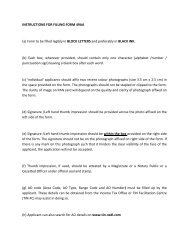
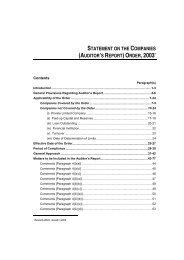
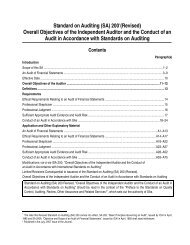
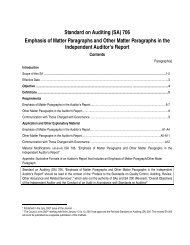
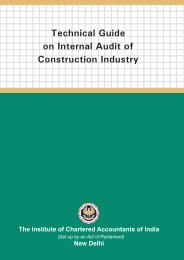
![FORM 1 [See sub-rule (1) of rule 3] FORM OF ... - CAalley.com](https://img.yumpu.com/49905825/1/190x245/form-1-see-sub-rule-1-of-rule-3-form-of-caalleycom.jpg?quality=85)
